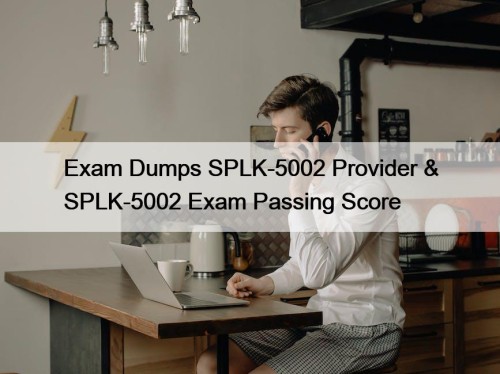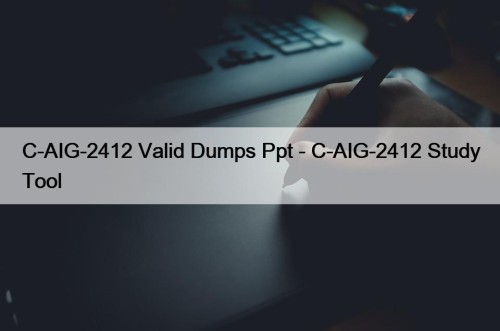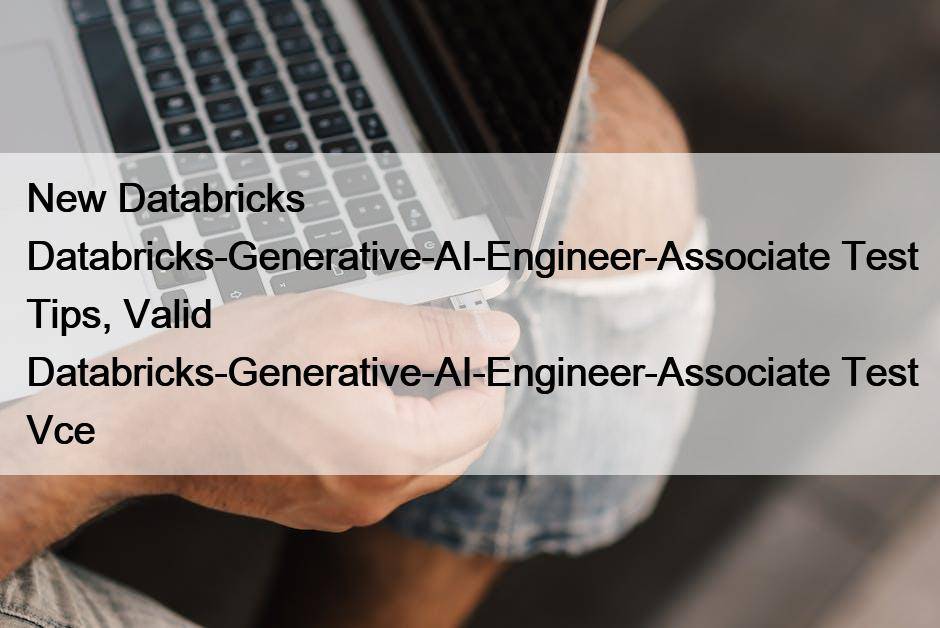Most Popular
 Exam Dumps SPLK-5002 Provider & SPLK-5002 Exam Passing Score
Exam Dumps SPLK-5002 Provider & SPLK-5002 Exam Passing Score
For candidates who are going to buy SPLK-5002 exam materials ...
 IBM C1000-185 Test Questions Fee - Latest C1000-185 Exam Forum
IBM C1000-185 Test Questions Fee - Latest C1000-185 Exam Forum
The C1000-185 PDF file contains the real, valid, and updated ...
 C-AIG-2412 Valid Dumps Ppt - C-AIG-2412 Study Tool
C-AIG-2412 Valid Dumps Ppt - C-AIG-2412 Study Tool
A lot of students have used our product and prepared ...



New Databricks Databricks-Generative-AI-Engineer-Associate Test Tips, Valid Databricks-Generative-AI-Engineer-Associate Test Vce

The system of Databricks-Generative-AI-Engineer-Associate study materials is very smooth and you don't need to spend a lot of time installing it. We take into account all aspects and save you as much time as possible. After the installation is complete, you can devote all of your time to studying our Databricks-Generative-AI-Engineer-Associate Exam Questions. We use your time as much as possible for learning. This must remove all unnecessary programs. Our Databricks-Generative-AI-Engineer-Associate study materials are so efficient!
Databricks Databricks-Generative-AI-Engineer-Associate Exam Syllabus Topics:
| Topic | Details |
|---|---|
| Topic 1 |
|
| Topic 2 |
|
| Topic 3 |
|
| Topic 4 |
|
>> New Databricks Databricks-Generative-AI-Engineer-Associate Test Tips <<
Valid Databricks-Generative-AI-Engineer-Associate Test Vce - Valid Databricks-Generative-AI-Engineer-Associate Test Syllabus
For years our team has built a top-ranking brand with mighty and main which bears a high reputation both at home and abroad. The sales volume of the Databricks-Generative-AI-Engineer-Associate Test Practice guide we sell has far exceeded the same industry and favorable rate about our products is approximate to 100%. Why the clients speak highly of our Databricks-Generative-AI-Engineer-Associate exam dump? Our dedicated service, high quality and passing rate and diversified functions contribute greatly to the high prestige of our products. We provide free trial service before the purchase, the consultation service online after the sale, free update service and the refund service in case the clients fail in the test.
Databricks Certified Generative AI Engineer Associate Sample Questions (Q54-Q59):
NEW QUESTION # 54
A Generative Al Engineer is building a system which will answer questions on latest stock news articles.
Which will NOT help with ensuring the outputs are relevant to financial news?
- A. Implement a comprehensive guardrail framework that includes policies for content filters tailored to the finance sector.
- B. Increase the compute to improve processing speed of questions to allow greater relevancy analysis C Implement a profanity filter to screen out offensive language
- C. Incorporate manual reviews to correct any problematic outputs prior to sending to the users
Answer: B
Explanation:
In the context of ensuring that outputs are relevant to financial news, increasing compute power (option B) does not directly improve therelevanceof the LLM-generated outputs. Here's why:
* Compute Power and Relevancy:Increasing compute power can help the model process inputs faster, but it does not inherentlyimprove therelevanceof the answers. Relevancy depends on the data sources, the retrieval method, and the filtering mechanisms in place, not on how quickly the model processes the query.
* What Actually Helps with Relevance:Other methods, like content filtering, guardrails, or manual review, can directly impact the relevance of the model's responses by ensuring the model focuses on pertinent financial content. These methods help tailor the LLM's responses to the financial domain and avoid irrelevant or harmful outputs.
* Why Other Options Are More Relevant:
* A (Comprehensive Guardrail Framework): This will ensure that the model avoids generating content that is irrelevant or inappropriate in the finance sector.
* C (Profanity Filter): While not directly related to financial relevancy, ensuring the output is clean and professional is still important in maintaining the quality of responses.
* D (Manual Review): Incorporating human oversight to catch and correct issues with the LLM's output ensures the final answers are aligned with financial content expectations.
Thus, increasing compute power does not help with ensuring the outputs are more relevant to financial news, making option B the correct answer.
NEW QUESTION # 55
What is an effective method to preprocess prompts using custom code before sending them to an LLM?
- A. Directly modify the LLM's internal architecture to include preprocessing steps
- B. Write a MLflow PyFunc model that has a separate function to process the prompts
- C. It is better not to introduce custom code to preprocess prompts as the LLM has not been trained with examples of the preprocessed prompts
- D. Rather than preprocessing prompts, it's more effective to postprocess the LLM outputs to align the outputs to desired outcomes
Answer: B
Explanation:
The most effective way to preprocess prompts using custom code is to write a custom model, such as an MLflow PyFunc model. Here's a breakdown of why this is the correct approach:
* MLflow PyFunc Models:MLflow is a widely used platform for managing the machine learning lifecycle, including experimentation, reproducibility, and deployment. APyFuncmodel is a generic Python function model that can implement custom logic, which includes preprocessing prompts.
* Preprocessing Prompts:Preprocessing could include various tasks like cleaning up the user input, formatting it according to specific rules, or augmenting it with additional context before passing it to the LLM. Writing this preprocessing as part of a PyFunc model allows the custom code to be managed, tested, and deployed easily.
* Modular and Reusable:By separating the preprocessing logic into a PyFunc model, the system becomes modular, making it easier to maintain and update without needing to modify the core LLM or retrain it.
* Why Other Options Are Less Suitable:
* A (Modify LLM's Internal Architecture): Directly modifying the LLM's architecture is highly impractical and can disrupt the model's performance. LLMs are typically treated as black-box models for tasks like prompt processing.
* B (Avoid Custom Code): While it's true that LLMs haven't been explicitly trained with preprocessed prompts, preprocessing can still improve clarity and alignment with desired input formats without confusing the model.
* C (Postprocessing Outputs): While postprocessing the output can be useful, it doesn't address the need for clean and well-formatted inputs, which directly affect the quality of the model's responses.
Thus, using an MLflow PyFunc model allows for flexible and controlled preprocessing of prompts in a scalable way, making it the most effective method.
NEW QUESTION # 56
A Generative AI Engineer is tasked with deploying an application that takes advantage of a custom MLflow Pyfunc model to return some interim results.
How should they configure the endpoint to pass the secrets and credentials?
- A. Pass the secrets in plain text
- B. Add credentials using environment variables
- C. Use spark.conf.set ()
- D. Pass variables using the Databricks Feature Store API
Answer: B
Explanation:
Context: Deploying an application that uses an MLflow Pyfunc model involves managing sensitive information such as secrets and credentials securely.
Explanation of Options:
* Option A: Use spark.conf.set(): While this method can pass configurations within Spark jobs, using it for secrets is not recommended because it may expose them in logs or Spark UI.
* Option B: Pass variables using the Databricks Feature Store API: The Feature Store API is designed for managing features for machine learning, not for handling secrets or credentials.
* Option C: Add credentials using environment variables: This is a common practice for managing credentials in a secure manner, as environment variables can be accessed securely by applications without exposing them in the codebase.
* Option D: Pass the secrets in plain text: This is highly insecure and not recommended, as it exposes sensitive information directly in the code.
Therefore,Option Cis the best method for securely passing secrets and credentials to an application, protecting them from exposure.
NEW QUESTION # 57
A Generative AI Engineer is building a Generative AI system that suggests the best matched employee team member to newly scoped projects. The team member is selected from a very large team. Thematch should be based upon project date availability and how well their employee profile matches the project scope. Both the employee profile and project scope are unstructured text.
How should the Generative Al Engineer architect their system?
- A. Create a tool for finding available team members given project dates. Embed all project scopes into a vector store, perform a retrieval using team member profiles to find the best team member.
- B. Create a tool to find available team members given project dates. Create a second tool that can calculate a similarity score for a combination of team member profile and the project scope. Iterate through the team members and rank by best score to select a team member.
- C. Create a tool for finding team member availability given project dates, and another tool that uses an LLM to extract keywords from project scopes. Iterate through available team members' profiles and perform keyword matching to find the best available team member.
- D. Create a tool for finding available team members given project dates. Embed team profiles into a vector store and use the project scope and filtering to perform retrieval to find the available best matched team members.
Answer: D
Explanation:
* Problem Context: The problem involves matching team members to new projects based on two main factors:
* Availability: Ensure the team members are available during the project dates.
* Profile-Project Match: Use the employee profiles (unstructured text) to find the best match for a project's scope (also unstructured text).
The two main inputs are theemployee profilesandproject scopes, both of which are unstructured. This means traditional rule-based systems (e.g., simple keyword matching) would be inefficient, especially when working with large datasets.
* Explanation of Options: Let's break down the provided options to understand why D is the most optimal answer.
* Option Asuggests embedding project scopes into a vector store and then performing retrieval using team member profiles. While embedding project scopes into a vector store is a valid technique, it skips an important detail: the focus should primarily be on embedding employee profiles because we're matching the profiles to a new project, not the other way around.
* Option Binvolves using a large language model (LLM) to extract keywords from the project scope and perform keyword matching on employee profiles. While LLMs can help with keyword extraction, this approach is too simplistic and doesn't leverage advanced retrieval techniques like vector embeddings, which can handle the nuanced and rich semantics of unstructured data. This approach may miss out on subtle but important similarities.
* Option Csuggests calculating a similarity score between each team member's profile and project scope. While this is a good idea, it doesn't specify how to handle the unstructured nature of data efficiently. Iterating through each member's profile individually could be computationally expensive in large teams. It also lacks the mention of using a vector store or an efficient retrieval mechanism.
* Option Dis the correct approach. Here's why:
* Embedding team profiles into a vector store: Using a vector store allows for efficient similarity searches on unstructured data. Embedding the team member profiles into vectors captures their semantics in a way that is far more flexible than keyword-based matching.
* Using project scope for retrieval: Instead of matching keywords, this approach suggests using vector embeddings and similarity search algorithms (e.g., cosine similarity) to find the team members whose profiles most closely align with the project scope.
* Filtering based on availability: Once the best-matched candidates are retrieved based on profile similarity, filtering them by availability ensures that the system provides a practically useful result.
This method efficiently handles large-scale datasets by leveragingvector embeddingsandsimilarity search techniques, both of which are fundamental tools inGenerative AI engineeringfor handling unstructured text.
* Technical References:
* Vector embeddings: In this approach, the unstructured text (employee profiles and project scopes) is converted into high-dimensional vectors using pretrained models (e.g., BERT, Sentence-BERT, or custom embeddings). These embeddings capture the semantic meaning of the text, making it easier to perform similarity-based retrieval.
* Vector stores: Solutions likeFAISSorMilvusallow storing and retrieving large numbers of vector embeddings quickly. This is critical when working with large teams where querying through individual profiles sequentially would be inefficient.
* LLM Integration: Large language models can assist in generating embeddings for both employee profiles and project scopes. They can also assist in fine-tuning similarity measures, ensuring that the retrieval system captures the nuances of the text data.
* Filtering: After retrieving the most similar profiles based on the project scope, filtering based on availability ensures that only team members who are free for the project are considered.
This system is scalable, efficient, and makes use of the latest techniques inGenerative AI, such as vector embeddings and semantic search.
NEW QUESTION # 58
A Generative Al Engineer is ready to deploy an LLM application written using Foundation Model APIs. They want to follow security best practices for production scenarios Which authentication method should they choose?
- A. Use an access token belonging to service principals
- B. Use a frequently rotated access token belonging to either a workspace user or a service principal
- C. Use OAuth machine-to-machine authentication
- D. Use an access token belonging to any workspace user
Answer: A
Explanation:
The task is to deploy an LLM application using Foundation Model APIs in a production environment while adhering to security best practices. Authentication is critical for securing access to Databricks resources, such as the Foundation Model API. Let's evaluate the options based on Databricks' security guidelines for production scenarios.
* Option A: Use an access token belonging to service principals
* Service principals are non-human identities designed for automated workflows and applications in Databricks. Using an access token tied to a service principal ensures that the authentication is scoped to the application, follows least-privilege principles (via role-based access control), and avoids reliance on individual user credentials. This is a security best practice for production deployments.
* Databricks Reference:"For production applications, use service principals with access tokens to authenticate securely, avoiding user-specific credentials"("Databricks Security Best Practices,"
2023). Additionally, the "Foundation Model API Documentation" states:"Service principal tokens are recommended for programmatic access to Foundation Model APIs."
* Option B: Use a frequently rotated access token belonging to either a workspace user or a service principal
* Frequent rotation enhances security by limiting token exposure, but tying the token to a workspace user introduces risks (e.g., user account changes, broader permissions). Including both user and service principal options dilutes the focus on application-specific security, making this less ideal than a service-principal-only approach. It also adds operational overhead without clear benefits over Option A.
* Databricks Reference:"While token rotation is a good practice, service principals are preferred over user accounts for application authentication"("Managing Tokens in Databricks," 2023).
* Option C: Use OAuth machine-to-machine authentication
* OAuth M2M (e.g., client credentials flow) is a secure method for application-to-service communication, often using service principals under the hood. However, Databricks' Foundation Model API primarily supports personal access tokens (PATs) or service principal tokens over full OAuth flows for simplicity in production setups. OAuth M2M adds complexity (e.g., managing refresh tokens) without a clear advantage in this context.
* Databricks Reference:"OAuth is supported in Databricks, but service principal tokens are simpler and sufficient for most API-based workloads"("Databricks Authentication Guide," 2023).
* Option D: Use an access token belonging to any workspace user
* Using a user's access token ties the application to an individual's identity, violating security best practices. It risks exposure if the user leaves, changes roles, or has overly broad permissions, and it's not scalable or auditable for production.
* Databricks Reference:"Avoid using personal user tokens for production applications due to security and governance concerns"("Databricks Security Best Practices," 2023).
Conclusion: Option A is the best choice, as it uses a service principal's access token, aligning with Databricks' security best practices for production LLM applications. It ensures secure, application-specific authentication with minimal complexity, as explicitly recommended for Foundation Model API deployments.
NEW QUESTION # 59
......
I believe that a lot of people working in the IT industry hope to pass some IT certification exams to obtain the corresponding certifications. Some IT authentication certificates can help you promote to a higher job position in this fiercely competitive IT industry. Now the very popular Databricks Databricks-Generative-AI-Engineer-Associate authentication certificate is one of them. Although passing the Databricks certification Databricks-Generative-AI-Engineer-Associate exam is not so easy, there are still many ways to help you successfully pass the exam. While you can choose to spend a lot of time and energy to review the related IT knowledge, and also you can choose a effective training course. DumpExam can provide the pertinent simulation test,which is very effective to help you pass the exam and can save your precious time and energy to achieve your dream. DumpExam will be your best choice.
Valid Databricks-Generative-AI-Engineer-Associate Test Vce: https://www.dumpexam.com/Databricks-Generative-AI-Engineer-Associate-valid-torrent.html
- Databricks - Databricks-Generative-AI-Engineer-Associate - Unparalleled New Databricks Certified Generative AI Engineer Associate Test Tips ⏮ Open ▛ www.examdiscuss.com ▟ enter ( Databricks-Generative-AI-Engineer-Associate ) and obtain a free download 🐴Latest Databricks-Generative-AI-Engineer-Associate Dumps Pdf
- Databricks-Generative-AI-Engineer-Associate Training Solutions 🍶 Databricks-Generative-AI-Engineer-Associate Exam Experience 💡 Databricks-Generative-AI-Engineer-Associate Passing Score 🚜 Search for 「 Databricks-Generative-AI-Engineer-Associate 」 and obtain a free download on 【 www.pdfvce.com 】 🥂Test Databricks-Generative-AI-Engineer-Associate Dump
- Test Databricks-Generative-AI-Engineer-Associate Dump 🧿 Instant Databricks-Generative-AI-Engineer-Associate Access 🏀 Test Databricks-Generative-AI-Engineer-Associate Cram Review 🧹 Enter “ www.prep4away.com ” and search for ⇛ Databricks-Generative-AI-Engineer-Associate ⇚ to download for free 🥴Databricks-Generative-AI-Engineer-Associate Top Dumps
- Databricks-Generative-AI-Engineer-Associate Passing Score 🔉 Databricks-Generative-AI-Engineer-Associate Passing Score 😊 Databricks-Generative-AI-Engineer-Associate Latest Test Labs 🦙 Search for “ Databricks-Generative-AI-Engineer-Associate ” and download exam materials for free through 《 www.pdfvce.com 》 🐌Databricks-Generative-AI-Engineer-Associate Valid Braindumps Ebook
- Databricks-Generative-AI-Engineer-Associate Top Dumps 🧝 Databricks-Generative-AI-Engineer-Associate Exam Experience 🐭 Latest Databricks-Generative-AI-Engineer-Associate Dumps Pdf 🧜 Simply search for ⇛ Databricks-Generative-AI-Engineer-Associate ⇚ for free download on ✔ www.examdiscuss.com ️✔️ 🔯Test Databricks-Generative-AI-Engineer-Associate Dump
- Newest New Databricks-Generative-AI-Engineer-Associate Test Tips - Pass Databricks-Generative-AI-Engineer-Associate Exam 🍌 Go to website ▛ www.pdfvce.com ▟ open and search for { Databricks-Generative-AI-Engineer-Associate } to download for free 🍣Databricks-Generative-AI-Engineer-Associate Exam Experience
- TOP New Databricks-Generative-AI-Engineer-Associate Test Tips - Databricks Databricks Certified Generative AI Engineer Associate - High-quality Valid Databricks-Generative-AI-Engineer-Associate Test Vce 🥼 Easily obtain free download of ➽ Databricks-Generative-AI-Engineer-Associate 🢪 by searching on ▶ www.exams4collection.com ◀ 🧯Valid Databricks-Generative-AI-Engineer-Associate Exam Cost
- Databricks-Generative-AI-Engineer-Associate New Study Notes 🚛 Databricks-Generative-AI-Engineer-Associate Passing Score 🛩 Databricks-Generative-AI-Engineer-Associate Training Solutions 🚶 Search for ➤ Databricks-Generative-AI-Engineer-Associate ⮘ and obtain a free download on ▷ www.pdfvce.com ◁ 💲Databricks-Generative-AI-Engineer-Associate Latest Test Labs
- Pass Guaranteed Databricks - Databricks-Generative-AI-Engineer-Associate - Databricks Certified Generative AI Engineer Associate –Efficient New Test Tips 🤝 Search for ✔ Databricks-Generative-AI-Engineer-Associate ️✔️ and download it for free on ⏩ www.examdiscuss.com ⏪ website 🔧Databricks-Generative-AI-Engineer-Associate New Study Notes
- Reliable Databricks-Generative-AI-Engineer-Associate Test Question 🚎 Instant Databricks-Generative-AI-Engineer-Associate Access 🍴 Test Databricks-Generative-AI-Engineer-Associate Dump 💒 Open website ▛ www.pdfvce.com ▟ and search for ✔ Databricks-Generative-AI-Engineer-Associate ️✔️ for free download 📏Databricks-Generative-AI-Engineer-Associate Exam Experience
- Databricks-Generative-AI-Engineer-Associate Book Free 🦏 Latest Databricks-Generative-AI-Engineer-Associate Dumps Pdf 🤲 Databricks-Generative-AI-Engineer-Associate Pass4sure Pass Guide 🍻 Go to website ▛ www.real4dumps.com ▟ open and search for ⮆ Databricks-Generative-AI-Engineer-Associate ⮄ to download for free 🍯Instant Databricks-Generative-AI-Engineer-Associate Access
- Databricks-Generative-AI-Engineer-Associate Exam Questions
- zeedemy.online marketika.net qudurataleabqariu.online balaghul-quran.com languagex.edu.vn go.webfunnel.vn teachladakh.com institute.regenera.luxury leostar764.jodoblog.com healthincheck.co.uk
Tags: New Databricks-Generative-AI-Engineer-Associate Test Tips, Valid Databricks-Generative-AI-Engineer-Associate Test Vce, Valid Databricks-Generative-AI-Engineer-Associate Test Syllabus, Valid Databricks-Generative-AI-Engineer-Associate Test Forum, Databricks-Generative-AI-Engineer-Associate Valid Dumps Files